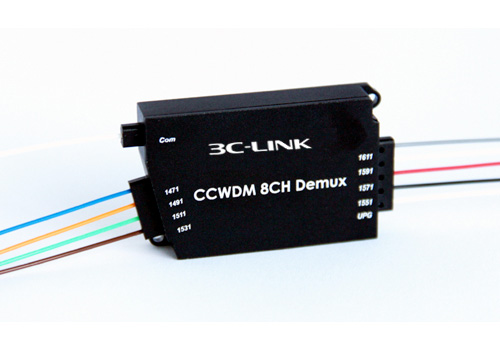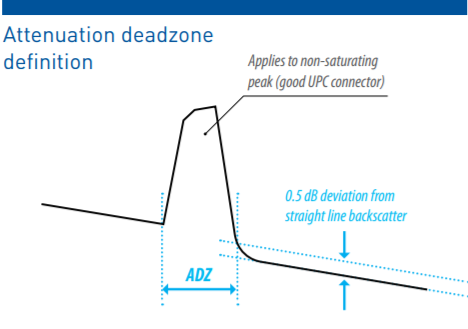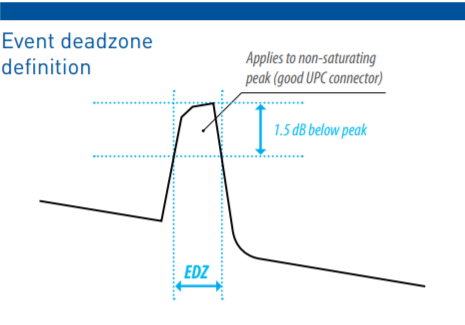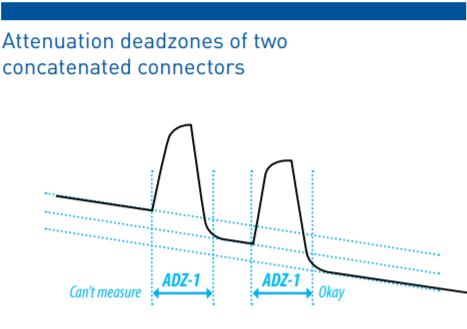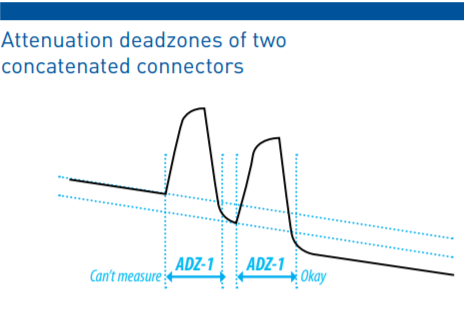what's the ODTR Measurement Method?
2021-08-19 20:09:04
Dead Zone
A dead zone is the location of a section of network beyond a reflective event, where subsequent network characteristics cannot be measured. There are two types of dead zones: attenuation dead zones (ADZs) and event dead zones (EDZs).
An ADZ is the minimum distance required to make an attenuation measurement for an event. This value is usually defined as the distance between the rising edge of a reflective event to the 0.5 dB deviation from a straight line fit to the optical backscatter level. The optical backscatter level is the sloping line that indicates the fiber attenuation over distance.
An EDZ is the minimum distance required for the OTDR to detect two separate events. This is usually defined as the distance between two cursor points set at 1.5 dB below a reflective peak, where the peak is non-saturating.
Dead zone measurement depends on the pulse width and the network element reflectance level. A shorter pulse width will result in a shorter dead zone, while a connector with a high return loss will result in a longer dead zone. When testing a longdistance network, testers will use a higher pulse width, thus increasing the length of the dead zone. This can cause multiple nearby events to be identified as a single merged event. Examples include the connector and splice of a pigtail as well as both connector ends of a patch cord.
Most OTDR manufacturers specify the OTDR dead zone for the shortest pulse width and optimal connector reflectance. However, this specification cannot be taken at face value. The suitable pulse width to be used for network measurement usually depends on the total length of the network, while individual components within the network have variable reflectance performance due to manufacturing quality and hygiene.
